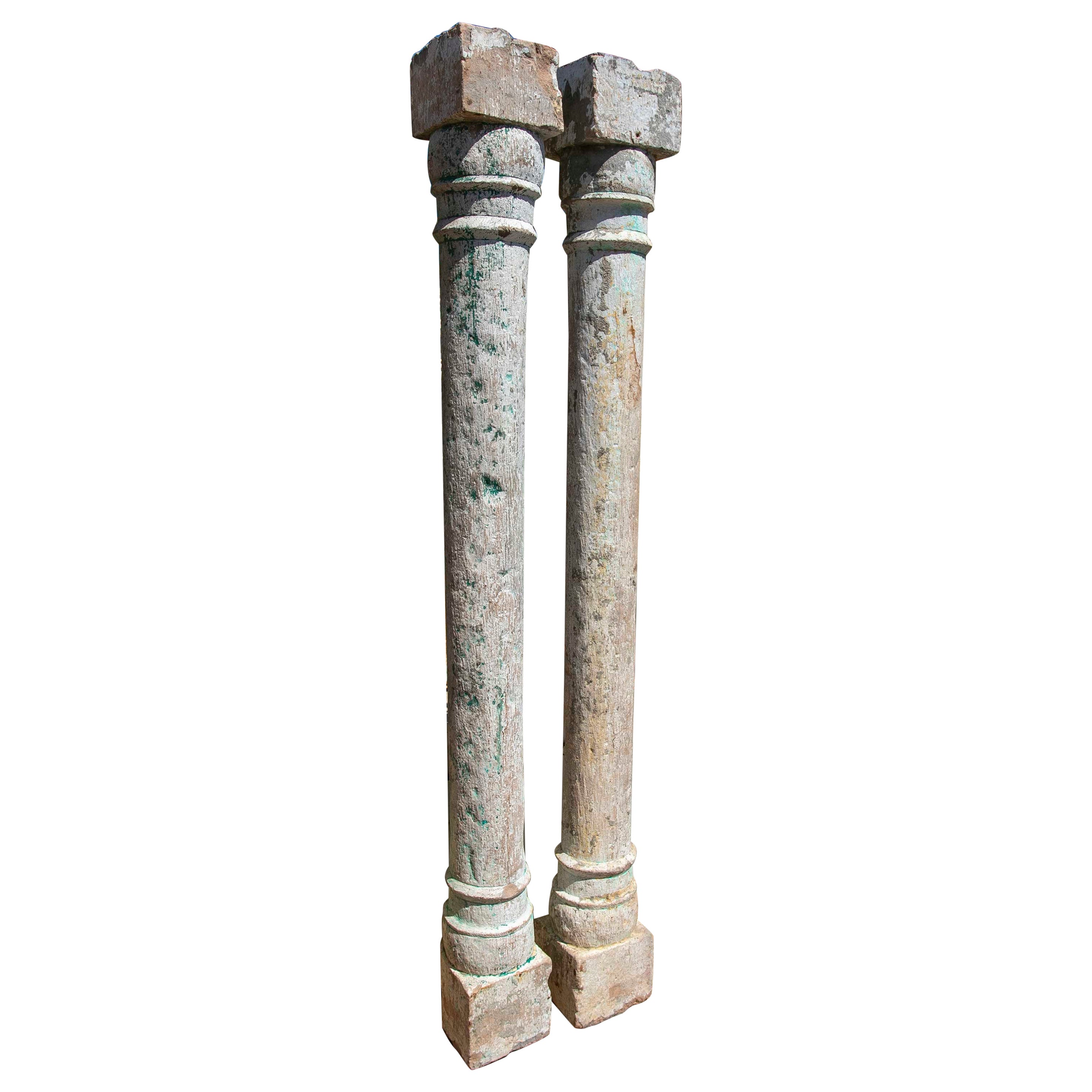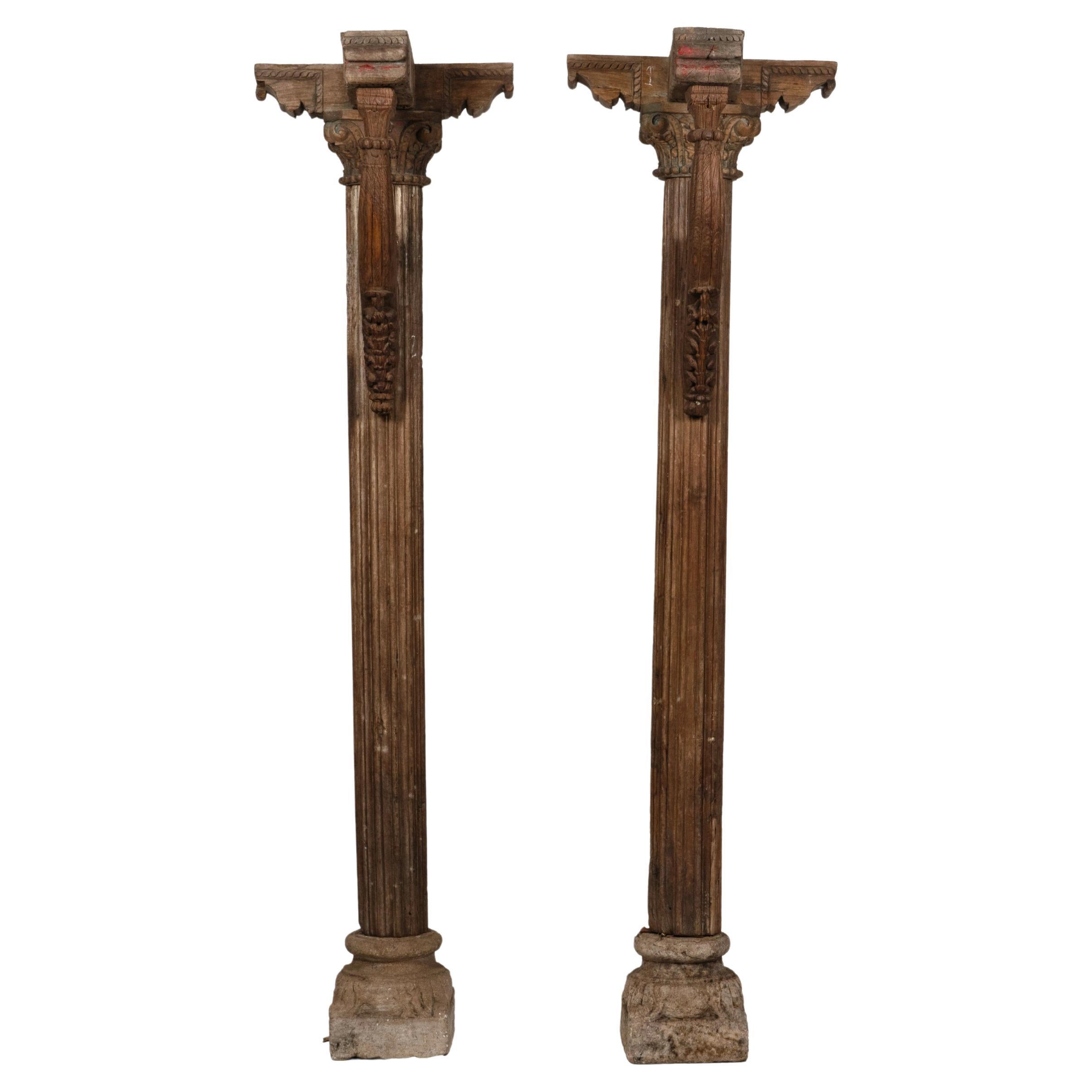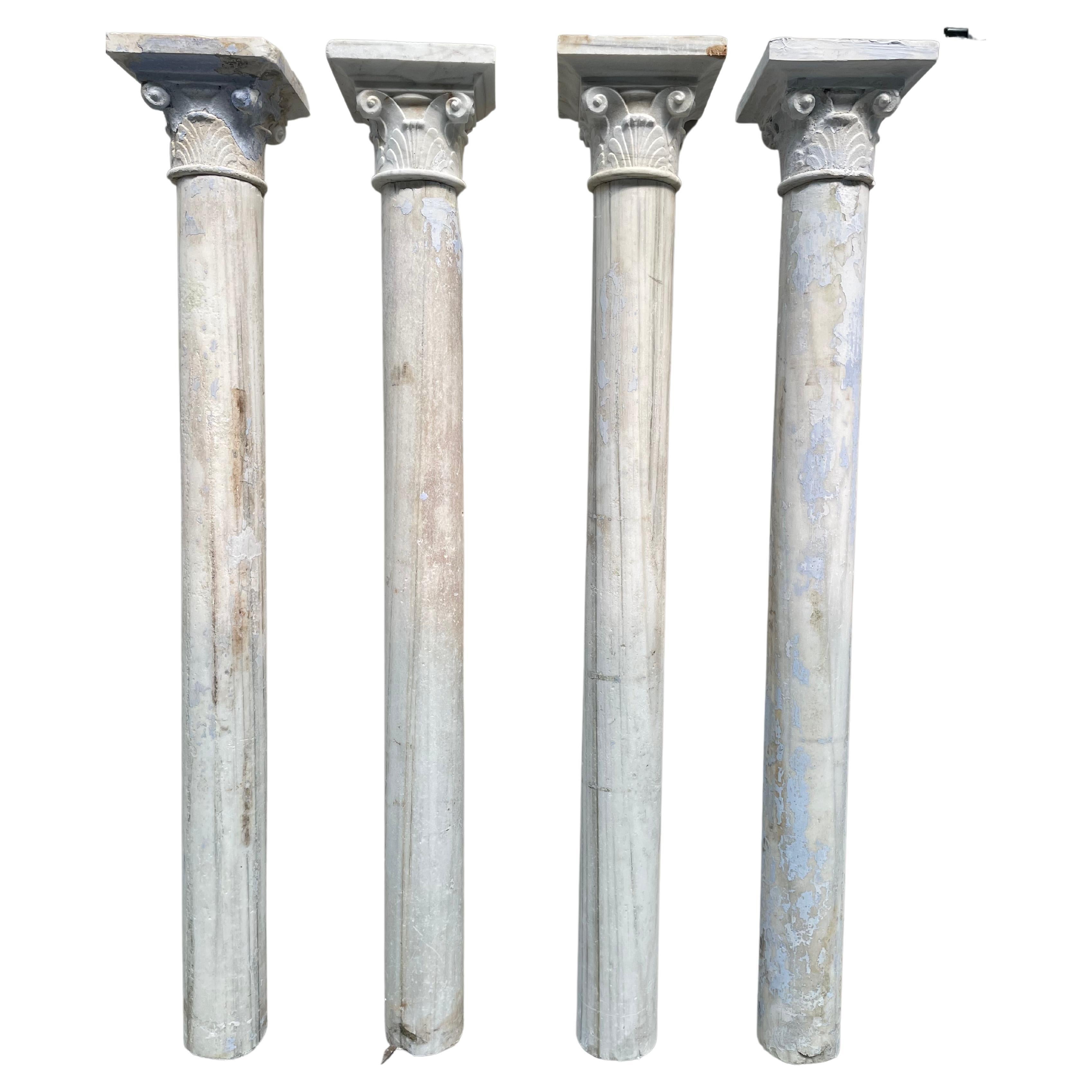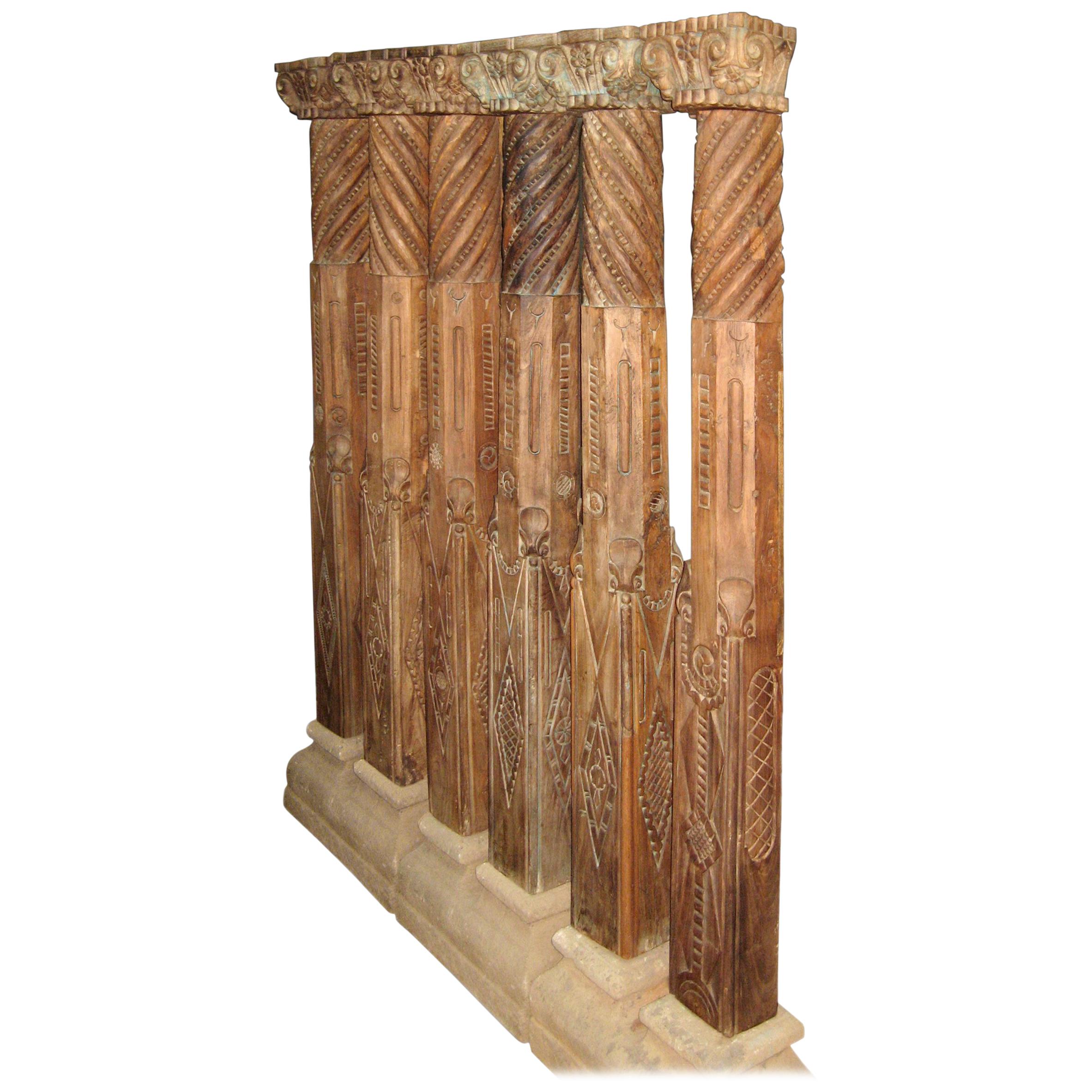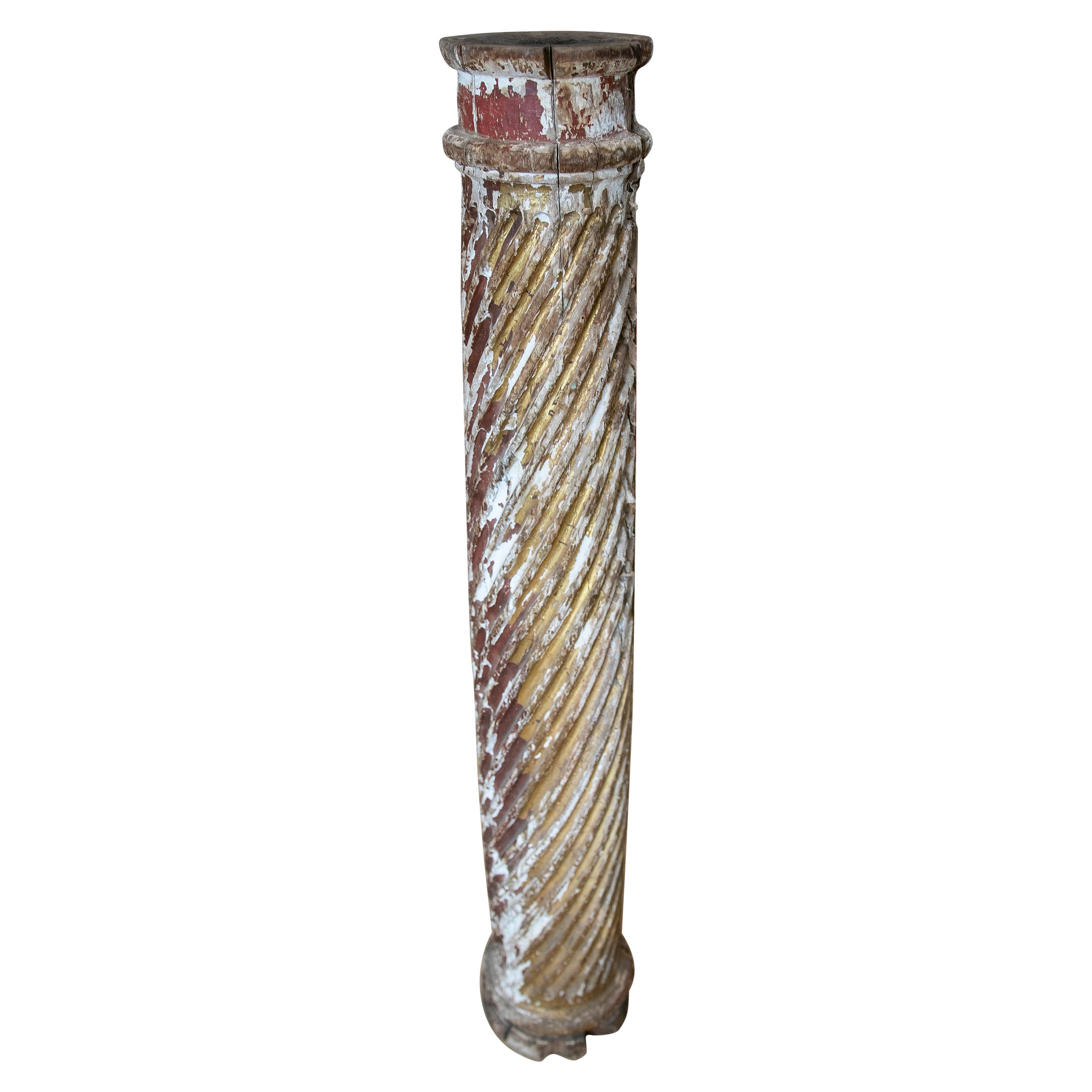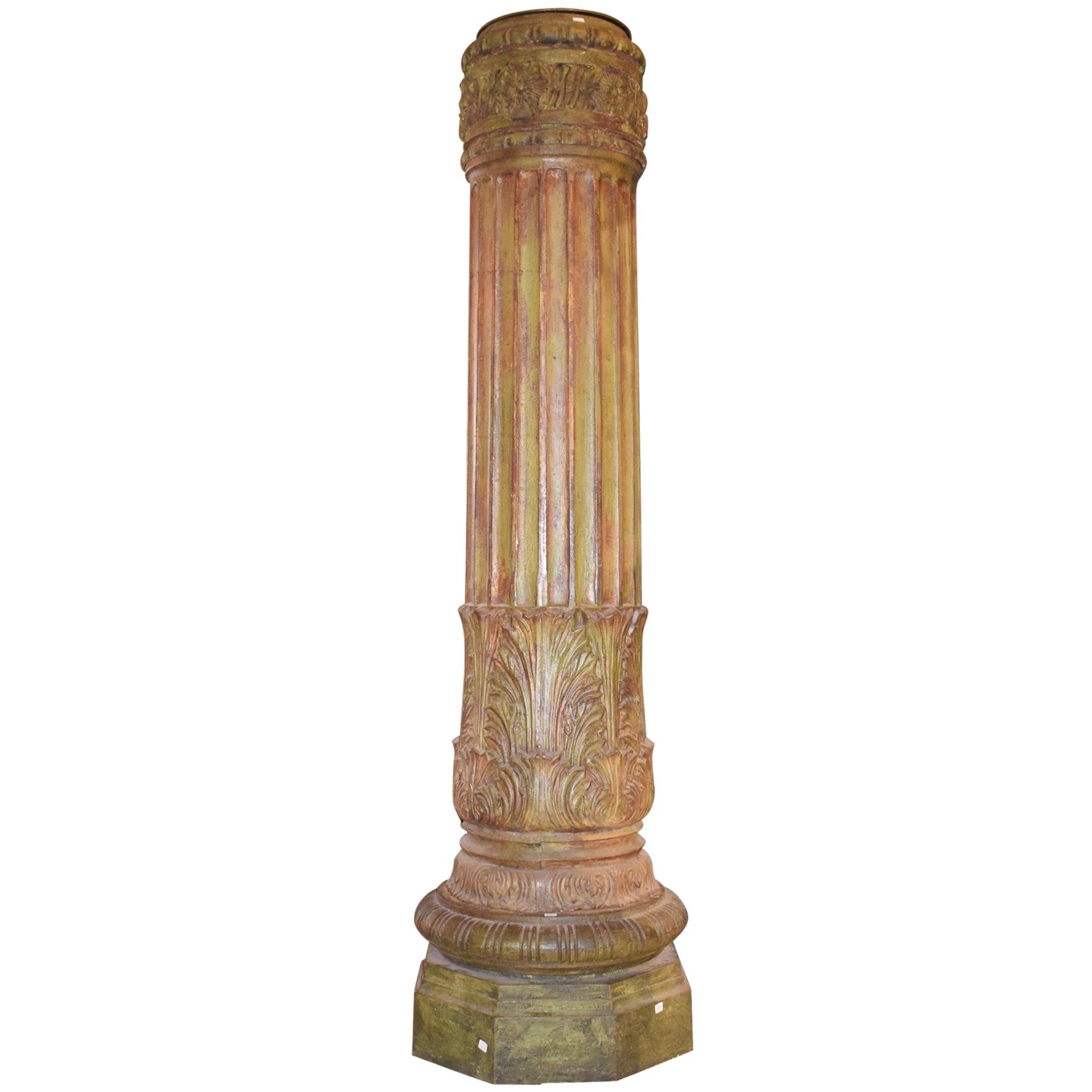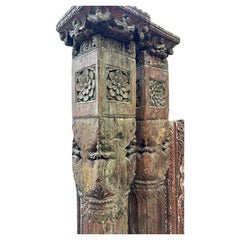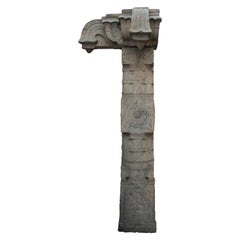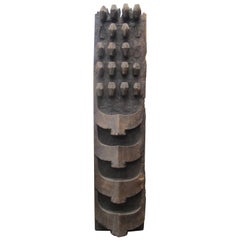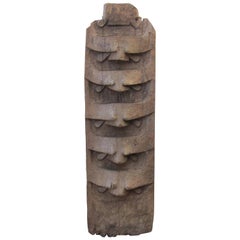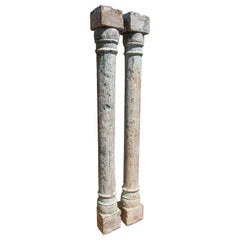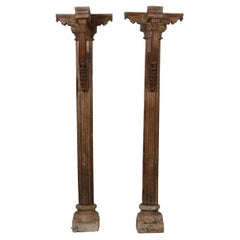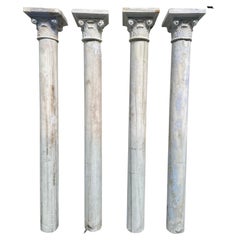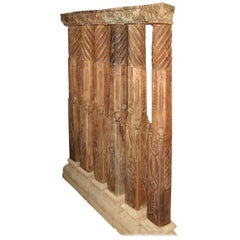Want more images or videos?
Request additional images or videos from the seller
1 of 5
Indo-Portuguese columns
$5,000per set
£3,879.96per set
€4,380.73per set
CA$7,154.54per set
A$7,806.90per set
CHF 4,039.04per set
MX$93,394.01per set
NOK 51,022.77per set
SEK 47,909.58per set
DKK 32,716.24per set
About the Item
Indo-Portuguese columns are a distinctive feature of the architectural heritage that emerged during the Portuguese colonization of India, primarily in regions like Goa, Kochi, Daman and Diu. These columns exemplify a unique blend of Indian and Portuguese design elements, reflecting the cultural and artistic exchange between the two civilizations from the 16th century onwards.
Crafted from materials like stone, and sometimes stucco, these columns are notable for their intricate carvings and ornamental details. The design often combines European elements like Corinthian, Ionic, and Doric capitals with Indian motifs, including floral, geometric, and religious symbols. This fusion results in a hybrid architectural style that is both aesthetically pleasing and structurally functional.
Indo-Portuguese columns are prominently featured in various types of buildings. These columns add to the grandeur and spiritual ambiance in churches, such as the Basílica do Bom Jesus and the Church of St. Francis of Assisi in Goa. In residential architecture, particularly in the colonial houses of Goa’s Fontainhas district, they support verandas and balconies, enhancing the charm and elegance of these structures.
These columns are more than just architectural elements; they are historical artifacts that tell the story of cultural integration and adaptation. They stand as a testament to the rich, intertwined histories of India and Portugal, preserving the legacy of a unique and enduring architectural tradition.
- Dimensions:Height: 185 in (469.9 cm)Width: 46 in (116.84 cm)Depth: 46 in (116.84 cm)
- Sold As:Set of 2
- Style:Anglo-Indian (Of the Period)
- Materials and Techniques:
- Place of Origin:
- Period:Late 17th Century
- Date of Manufacture:17-18th century
- Condition:Wear consistent with age and use.
- Seller Location:Mexico City, MX
- Reference Number:1stDibs: LU3531340376912
About the Seller
5.0
Vetted Professional Seller
Every seller passes strict standards for authenticity and reliability
Established in 1968
1stDibs seller since 2018
8 sales on 1stDibs
- ShippingRetrieving quote...Shipping from: Mexico City, Mexico
- Return Policy
More From This Seller
View AllMonolithic Teak Wood columns
Located in Mexico City, MX
Monolithic Teak Wood columns, carved stone bases with an elegant typical Indian design. Upper shaft is ending in a classic geometrical square design from the moghul empire, The body...
Category
Antique 18th Century Indian Pedestals and Columns
Materials
Stone
$8,750 / set
Kerala, Madras, South of India, Engraved Granite Column, Mandala and Naga Design
Located in Mexico City, MX
This unique monolitic reddish granite columns come from religious houses to fantastic temples in the south of the Indian subcontinent. This specific piece, with a beautiful geometric...
Category
Antique 16th Century Indian Pedestals and Columns
Materials
Granite
Naga TOTEM, North-East India, 19th Century
Located in Mexico City, MX
Coming from the area of influence of the Naga people, this stunning monolitic piece is an extraordinary example of their cultural views. The Nagas are a conglomeration of different t...
Category
Antique 19th Century Southeast Asian Tribal Sculptures and Carvings
Materials
Wood
Naga TOTEM, North-East India, 19th Century
Located in Mexico City, MX
Coming from the area of influence of the Naga people, this stunning piece is an extraordinary example of their cultural views. The Nagas are a conglomeration of different tribes nati...
Category
Antique 19th Century Indian Tribal Art
Materials
Wood
Indo Portuguese- Cabinet
Located in Mexico City, MX
The Indo-Portuguese cabinets from Goa and Diu represent a remarkable fusion of European and Indian craftsmanship from the 16th to 18th centuries. These exquisite cabinets were craft...
Category
Antique 18th Century Portuguese Spanish Colonial Cabinets
Materials
Silver
$38,000
17th Century, Peruvian Huamanga Stone
Located in Mexico City, MX
It is a beautiful carved stone known as Huamanga stone, endemic of the Zone of Ayacucho, Viceroyalty of Peru. With a refined regional touch and loaded of pre-Columbian flavor as Chinese, It represents the Holy Family of Mary, Joseph and Jesus with God Father...
Category
Antique 17th Century Peruvian Sculptures and Carvings
Materials
Stone
You May Also Like
19th Century Pair of Hand-Carved Stone Columns
Located in Marbella, ES
19th Century Pair of Hand-Carved Stone Columns
Category
Antique 19th Century European Pedestals and Columns
Materials
Stone
$5,937 / set
A Pair of Indian Wooden Columns with Brackets
Located in Chicago, IL
This pair of finely crafted Indo-Saracenic columns from the 1900's features a top support beam and intricately designed brackets. The cross-supporting beam is adorned with serpentine...
Category
Antique Early 1900s Indian Pedestals and Columns
Materials
Teak
$5,600 Sale Price / set
34% Off
Marble Columns of the 16th Century
Located in Zedelgem, BE
Marble columns minimum 17th century coming from a Spanish convent near Granada, however the base was not in a condition to salvage they're still a great find.
Category
Antique 16th Century Spanish Pedestals and Columns
Materials
Marble
$21,255 / set
Set of Six Pillars, Wood, Stone, India, 19th Century
Located in Madrid, ES
Row of six carved wooden pillars that have capitals in the upper part and stone bases carved in the lower end (these are grouped in pairs). The shafts have three different sections (...
Category
Antique 19th Century Indian Other Pedestals and Columns
Materials
Stone
18th Century Spanish Hand-Carved Fluted Wood Column
Located in Marbella, ES
18th Century Spanish hand-carved fluted wood column.
Category
Antique 18th Century Spanish Pedestals and Columns
Materials
Wood
Pair of Antique Iron Columns
Located in Atlanta, GA
Magnificent pair of antique fluted French iron columns with floral decoration, measures: 77 inches tall, octagonal base is 20 inches x 20 inches.
Category
Antique 19th Century French Architectural Elements
Materials
Iron
$10,625 / set
More Ways To Browse
Antique Stone Columns
17th Century Portuguese
17th Century Portuguese Furniture
Carved Stone Column
Francis Assisi
Indo Portuguese
Indo Portuguese Furniture
St Francis Of Assisi
Indo European
Anglo Portuguese
Stone Carved Plaque
Wooden Shutter
Antique Window Guard
French Niche
French Railing
Italian Niche
Italian Tiles Antique
Lions Head Architectural
